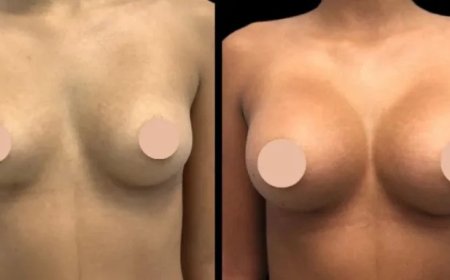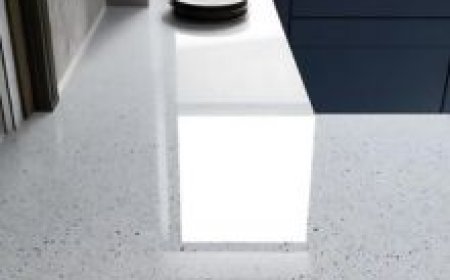What Are the Must-Have Components for a Safe Reprocessing Area?
Explore essential components of safe reprocessing areas in dental clinics. Enhance your dental office design with expert decontamination room design insights for safety and efficiency.

In the realm of dental office design, the reprocessing area stands out as a crucial space that ensures the safety of patients and staff alike. Integral to decontamination room design, this area handles the critical task of cleaning, disinfecting, and sterilising dental instruments. A well-planned reprocessing area mitigates infection risks, supports regulatory compliance, and enhances workflow efficiency.
This blog offers an in-depth look at the essential components every dental practice must have in its reprocessing area. By understanding these must-haves, UK dental clinics can foster safer environments and maintain the highest standards of hygiene and care.
Understanding the Reprocessing Area in Dental Office Design
The reprocessing area is a specialised section within the decontamination room designed specifically for the systematic cleaning and sterilisation of dental instruments. It is where used tools are transformed into safe, sterile equipment ready for patient use.
Its design and setup are pivotal in preventing cross-contamination. Without clearly defined zones and proper equipment, the reprocessing process can become inefficient or, worse, unsafe.
Key Objectives of a Safe Reprocessing Area
Before we dive into the components, its important to highlight the goals the reprocessing area must achieve:
- Infection control:Safely eliminate pathogens from instruments.
- Workflow efficiency:Facilitate smooth, logical instrument processing.
- Staff safety:Minimise exposure to harmful agents and ergonomic strain.
- Regulatory compliance:Meet or exceed UK health and safety standards.
- Space optimisation:Utilise available space effectively without crowding.
These objectives guide the selection and organisation of the areas components.

Must-Have Components for a Safe Reprocessing Area
1. Clearly Defined Workflow Zones
Effectivedecontamination room designstarts with defining distinct workflow zones:
- Dirty Zone:Where contaminated instruments are received and pre-cleaned.
- Clean Zone:For sterilisation, drying, inspection, and packaging.
- Storage Zone:Dedicated space for sterile instrument storage.
Physical and visual separation of these zones is essential to avoid cross-contamination and maintain operational clarity.
2. Instrument Cleaning Equipment
Cleaning is the first step in reprocessing. Essential equipment includes:
- Ultrasonic Cleaners:Use sound waves to remove debris from instruments effectively.
- Washer-Disinfectors:Automated machines that clean and disinfect instruments, ensuring consistent results and reducing manual handling.
Choosing equipment that fits the scale and workflow of your practice improves cleaning efficacy and staff safety.
3. Sterilisation Units
Sterilisation is the definitive step to eliminate all microorganisms. A high-quality steriliser or autoclave is indispensable. Consider features such as:
- Rapid cycle times.
- Adequate chamber size to accommodate your instrument load.
- User-friendly controls and safety features.
Sterilisers must be placed in the clean zone, aligned with workflow to avoid contamination.
4. Drying and Cooling Area
After sterilisation, instruments require drying and cooling before packaging or storage. This area should be:
- Well-ventilated.
- Free from contaminants.
- Equipped with drying cabinets or racks designed to prevent moisture build-up.
A dedicated drying area ensures instruments remain sterile and ready for safe use.
5. Inspection and Packaging Stations
Visual and tactile inspection is critical to identify damage or debris missed during cleaning. This station needs:
- Bright, shadow-free lighting.
- Magnifying tools where necessary.
- Packaging materials and space for wrapping instruments securely.
Proper inspection and packaging help maintain sterility until instruments are needed.
6. Hand Hygiene Facilities
Hand hygiene is foundational to infection control. The reprocessing area should have:
- Dedicated handwashing sinks with hands-free taps.
- Antimicrobial soap dispensers.
- Hand sanitiser stations.
These facilities must be accessible throughout the workflow to encourage regular use.
7. Personal Protective Equipment (PPE) Stations
To protect staff from contamination and chemical exposure, provide:
- Gloves.
- Masks or respirators.
- Eye protection.
- Protective gowns or aprons.
PPE stations should be strategically placed near the dirty zone and other high-risk areas to ensure compliance.
8. Waste Disposal Systems
Proper disposal of contaminated materials is vital. The area should include:
- Segregated bins for general, clinical, and sharps waste.
- Clearly labelled containers following UK regulations.
- Safe and convenient access to waste bins to reduce contamination risk.
Efficient waste disposal supports a hygienic working environment.
9. Adequate Storage Solutions
Storage is more than just keeping instruments; it ensures the maintenance of sterility and organisation.
- Shelving units or cabinets for sterile instruments.
- Storage for cleaning agents and consumables.
- Designated spaces for contaminated instruments awaiting processing.
Storage should be arranged to maintain clear separation of clean and dirty items.
10. Environmental Controls
Temperature, humidity, and ventilation affect instrument processing and staff comfort. The area should have:
- Controlled temperature to support sterilisation efficacy.
- Adequate ventilation or air extraction, particularly in the dirty zone.
- Humidity controls to prevent instrument corrosion and microbial growth.
These environmental factors are crucial in decontamination room design.
Supporting Elements in Reprocessing Area Design
Ergonomic Workstations
Ergonomics improve staff comfort and reduce injury risk. Adjustable benches, anti-fatigue mats, and suitable seating support long shifts and repetitive tasks.
Workflow Layout
Design the reprocessing area for a linear flow, preventing cross-paths and unnecessary movement. Instruments should move logically from dirty to clean zones without backtracking.
Lighting and Visibility
Bright, consistent lighting is essential, especially at inspection stations. Natural light where possible enhances working conditions and staff wellbeing.

Regulatory Considerations for UK Dental Practices
UK dental practices must adhere to strict health and safety regulations regarding infection control. The reprocessing area design must:
- Comply with the Department of Healths Health Technical Memorandum (HTM) 01-05 guidelines.
- Meet workplace health and safety standards, including COSHH regulations.
- Ensure documentation and validation of sterilisation cycles.
Choosing compliant components and designing with regulation in mind mitigates risk and ensures patient trust.
The Role of Dental Office Design in Safe Reprocessing
Integrating it thoughtfully with other practice areas affects overall efficiency and hygiene.
- Proximity to treatment rooms reduces instrument transportation time.
- Controlled access limits contamination risks.
- Collaboration between the reception and waiting areas ensures seamless patient movement
With experts indental office designensures the reprocessing area supports the practices operational goals.
Conclusion
A safe reprocessing area depends on incorporating the right components thoughtfully within your decontamination room design. From clearly defined zones and essential equipment to environmental controls and ergonomic features, every element plays a role in maintaining hygiene, safety, and efficiency.
By prioritising these must-have components, dental practices in the UK can meet regulatory requirements and foster a culture of safety and professionalism.
For bespoke dental office design services that include expert decontamination room design, consider partnering with Divo interiors Ltd. Their tailored solutions ensure your practices reprocessing area supports excellent care standards and operational success.































